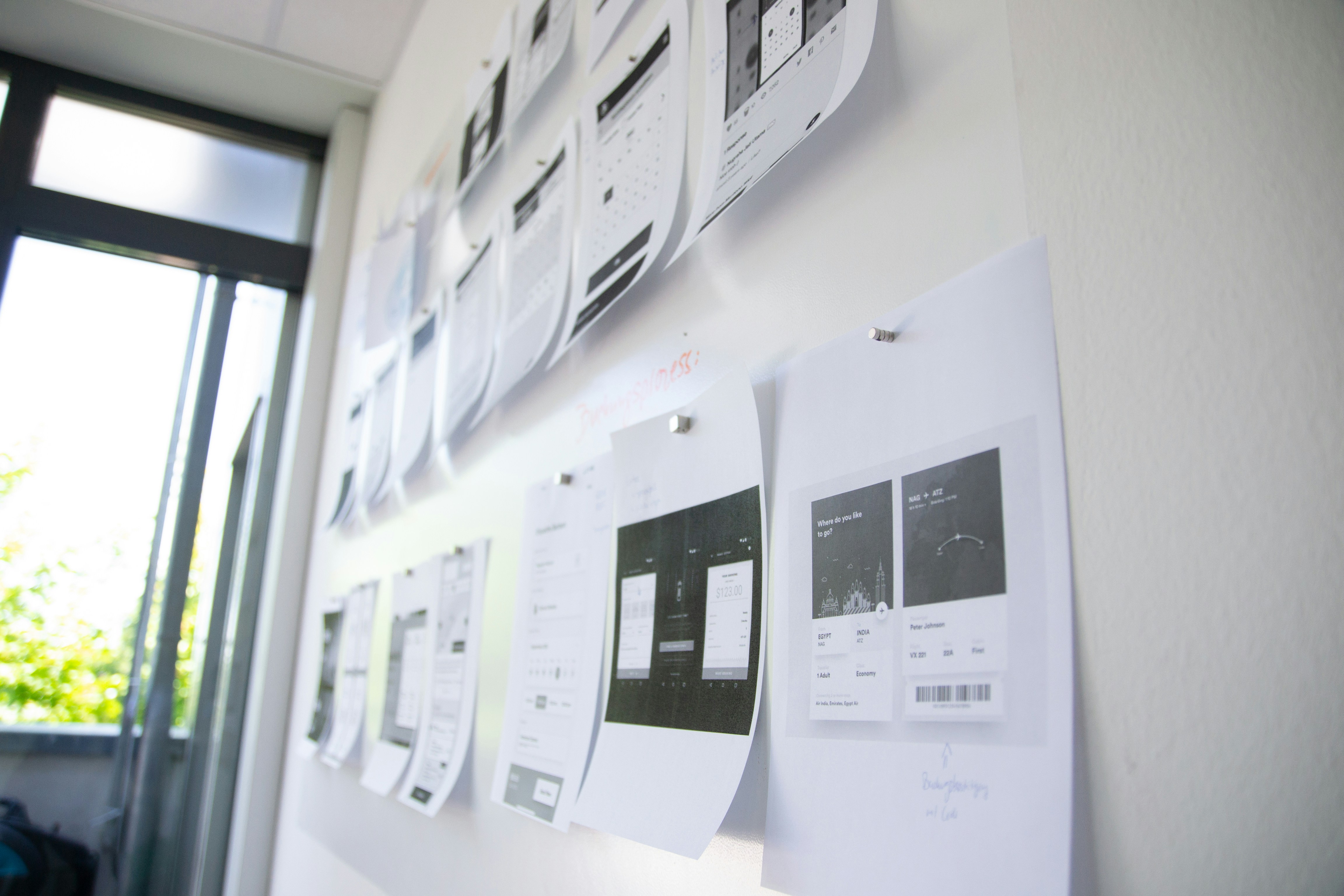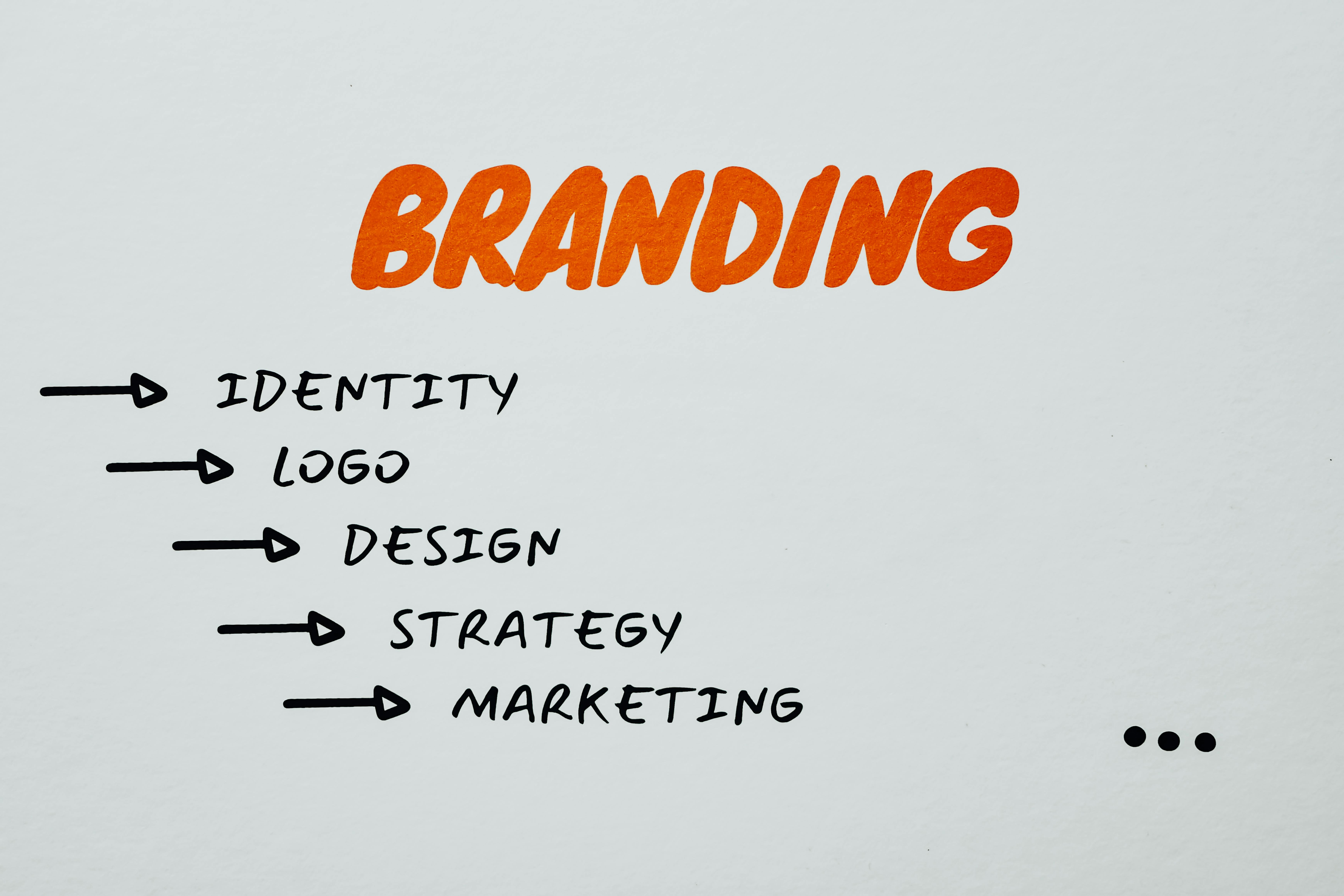
Design
Branding
The Anatomy of a Landing Page
Oct 21, 2024
A landing page is a standalone web page designed to capture a visitor's attention and encourage them to take a specific action. In digital marketing, landing pages play a crucial role. They serve as the first point of contact between you and potential customers. With an average conversion rate of 9.7%, they significantly outperform other types of signup forms. By focusing on designing landing pages that drive results, you can boost your conversion rates and achieve your marketing goals more effectively.
Understanding Landing Pages
Definition and Purpose
What is a Landing Page?
A landing page is a dedicated web page designed to capture your attention and guide you toward a specific action. Unlike regular web pages, landing pages focus on a single objective, such as signing up for a newsletter or purchasing a product. They serve as the entry point for potential customers, making them crucial in digital marketing strategies.
Purpose of a Landing Page
The primary purpose of a landing page is to convert visitors into leads or customers. By providing a clear and compelling call to action (CTA), landing pages encourage you to take the desired step. Whether it's filling out a form or clicking a button, the goal is to drive conversions and achieve specific business objectives.
Types of Landing Pages
Click-Through Landing Pages
Click-through landing pages aim to warm you up before directing you to another page where the main conversion happens. These pages often provide detailed information about a product or service, helping you make informed decisions. By offering value and building trust, click-through landing pages increase the likelihood of conversion on the subsequent page.
Lead Generation Landing Pages
Lead generation landing pages focus on collecting your information, such as your name and email address. These pages typically offer something valuable in return, like an eBook or a free trial. By capturing your details, businesses can nurture relationships and convert you into a customer over time.
Want some examples?:
Good.co Landing Page Optimization Case Study This great post highlights the importance of visual design and user experience. By focusing on these elements, businesses can enhance the effectiveness of their landing pages.
This article on Landing Page Optimization Case Studies gives examples demonstrate the impact of A/B testing and page optimization. Data-driven decisions lead to significant business outcomes, showcasing best practices for successful landing pages.
Understanding these types of landing pages and their purposes helps you create more effective marketing strategies. By tailoring your approach to your audience's needs, you can drive better results and achieve your goals.
Benefits of a High-Converting Landing Page
Increased Conversion Rates
Importance of Conversion Rates
You might wonder why conversion rates matter so much. Well, they directly impact your business's success. A high conversion rate means more visitors are taking the desired action, whether it's signing up for a newsletter or making a purchase. This translates to more leads, sales, and ultimately, revenue. For instance, landing pages with webinar promotions can achieve a whopping 22.3% conversion rate, compared to the typical 10.76% conversion rate of all landing pages. This shows how a well-optimized landing page can significantly boost your results.
How Landing Pages Improve Conversions
Landing pages work wonders for conversions by focusing on a single goal. They eliminate distractions and guide you toward a specific action. By using clear and compelling calls to action (CTAs), landing pages make it easy for you to know what to do next. Plus, they often feature persuasive elements like testimonials and trust signals, which build confidence and encourage you to take the plunge. Optimized landing pages can achieve conversion rates as high as 11.45%, far surpassing the global average of 2.5%. This highlights the power of a well-crafted landing page in driving conversions.
Enhanced User Experience
User-Centric Design
A high-converting landing page doesn't just focus on conversions; it also prioritizes your experience. User-centric design ensures that the page is intuitive and easy to navigate. By understanding your needs and preferences, businesses can create landing pages that resonate with you. This approach not only enhances your experience but also increases the likelihood of conversion. For example, landing pages with 5th to 7th-grade level copy have the highest conversion rate at 11.1%, proving that simplicity and clarity go a long way in engaging users.
Simplified Navigation
Navigating a landing page should feel like a breeze. Simplified navigation helps you find what you're looking for without any hassle. By removing unnecessary elements and focusing on the essentials, landing pages keep you on track and prevent you from getting lost. This streamlined approach not only improves your experience but also boosts conversion rates. HubSpot reports the average conversion rate as 5.89%, while some businesses achieve rates above 10% by optimizing their landing pages for ease of use. So, when you land on a page that's easy to navigate, you're more likely to take action.
Essential Elements of a Landing Page
Compelling Headline
Crafting an Attention-Grabbing Headline
Your headline is the first thing visitors see. It needs to grab attention immediately. A powerful headline can increase conversions significantly. For instance, a positive benefit headline boosted conversions by over 40%. You want your headline to be clear and direct. Avoid jargon and keep it simple. A straightforward approach can make a big difference. KlientBoost found that chopping down the headline and speaking directly to the consumer lifted conversions by 190%. So, focus on clarity and relevance.
Aligning Headline with User Intent
Your headline should align with what your visitors are looking for. Think about their needs and expectations. If they click on an ad promising a solution, your headline should reflect that promise. This alignment builds trust and encourages further engagement. When your headline matches user intent, visitors feel understood and are more likely to stay on your page. This connection can lead to higher conversion rates.
Persuasive Call to Action (CTA)
Designing an Effective CTA
Your call to action is crucial. It tells visitors what to do next. A well-designed CTA stands out and is easy to understand. Use action-oriented language. Words like "Get," "Start," or "Discover" can motivate users to click. The design should be visually appealing. Use contrasting colors to make the CTA button pop. This visibility encourages interaction and increases the likelihood of conversion.
Placement and Visibility of CTA
Where you place your CTA matters. It should be prominent and easy to find. Ideally, position it above the fold so visitors see it without scrolling. This placement ensures immediate visibility. You can also repeat the CTA throughout the page. This repetition reinforces the desired action. Make sure the CTA is not buried under too much text or images. Keep it accessible and clear.
Trust Signals
Importance of Trust Signals
Trust signals reassure visitors. They show that your business is credible and reliable. When people trust your site, they are more likely to convert. Trust signals can include testimonials, security badges, or client logos. These elements build confidence in your brand. They tell visitors that others have had positive experiences with your business.
Examples of Trust Signals
Incorporate various trust signals to enhance credibility. Testimonials are powerful. They provide social proof and validate your offerings. For example, ContentBeta suggests using testimonials with a company logo, a brief description, and a CTA. This format is effective in building trust. Security badges also play a role. They assure visitors that their information is safe. Client logos can highlight partnerships with reputable companies. These signals collectively create a trustworthy environment, encouraging visitors to take action.
Designing Landing Pages for Success
Creating a landing page that captivates and converts requires a keen eye for design. Let's dive into how you can craft a visually appealing and effective landing page.
Visual and Structural Design
Clean and Organized Layout
When you first land on a page, what catches your eye? A clean and organized layout does wonders for user experience. It helps you find information quickly without feeling overwhelmed. By arranging elements logically, you guide visitors smoothly through the content. This approach not only enhances readability but also boosts engagement. Remember, simplicity is key. Avoid clutter and focus on presenting essential information clearly.
Use of Engaging Visuals
Visuals are powerful tools in web design. They grab attention and convey messages faster than text. By using high-quality images and graphics, you can make your landing page more appealing. Visuals should align with your brand and message. They should also support the content rather than distract from it. Consider using visuals that evoke emotions or tell a story. This connection can make your page memorable and encourage visitors to take action.
Want some science?:
Visual design is a fundamental aspect of creating engaging and retaining user experiences. By leveraging color schemes, typography, and imagery effectively, you can create compelling interfaces that capture attention and foster long-term engagement.
Designing Landing Page for Conversion
Aligning Design with User Journey
Understanding your user's journey is crucial in designing landing pages. You want to ensure that every element on the page aligns with their needs and expectations. Start by identifying the path visitors take from entry to conversion. Then, tailor your design to support this journey. For instance, if users come from an ad promising a solution, your page should deliver on that promise immediately. This alignment builds trust and encourages further interaction.
Using Directional Cues
Directional cues guide visitors' eyes to important elements on your page. Arrows, lines, or even the gaze of a person in an image can direct attention to your call to action. These cues help visitors navigate the page effortlessly. By strategically placing directional cues, you can highlight key information and encourage desired actions. This technique enhances usability and increases the likelihood of conversion.
Scientific Research Findings:
Analyzing the Impact of Visual Elements in Website Design on User Experience and Interaction highlights that visual hierarchy directs users' attention and improves usability. By using directional cues, you can enhance the overall user experience and drive better results.
Designing landing pages with these principles in mind will set you up for success. By focusing on visual appeal and aligning design with user needs, you create a seamless experience that encourages conversions.
Best Practices for Building Landing Pages
Creating a landing page that truly resonates with your audience requires a strategic approach. Let's explore some best practices that can elevate your landing page's performance.
A/B Testing
What is A/B Testing?
A/B testing, also known as split testing, involves comparing two versions of a webpage to see which one performs better. You create two variants, A and B, and show them to different segments of your audience. By analyzing which version yields higher conversions, you can make informed decisions about your landing page design.
Implementing A/B Testing for Optimization
To implement A/B testing effectively, start by identifying the elements you want to test. This could be anything from headlines to call-to-action buttons. Change only one element at a time to accurately measure its impact. Use tools like Google Optimize or Optimizely to run your tests. Once you gather enough data, analyze the results to determine which version performs better. For instance, a well-executed A/B test can increase your page’s conversion rate by up to 95%. This optimization process helps you refine your landing page for maximum effectiveness.
Mobile Optimization
Importance of Mobile-Friendly Design
In today's digital age, more people access websites via mobile devices than ever before. Ensuring your landing page is mobile-friendly is crucial. A mobile-optimized design enhances user experience, making it easier for visitors to navigate and engage with your content. If your page isn't mobile-friendly, you risk losing potential customers who find it difficult to interact with your site on their devices.
Techniques for Mobile Optimization
To optimize your landing page for mobile, focus on a responsive design that adapts to different screen sizes. Use larger fonts and buttons to improve readability and usability. Simplify navigation by minimizing the number of clicks needed to reach important information. Compress images to reduce load times, ensuring your page loads quickly on mobile networks. By implementing these techniques, you create a seamless experience for mobile users, increasing the likelihood of conversions.
By incorporating A/B testing and mobile optimization into your landing page strategy, you can significantly enhance its performance. These best practices not only improve user experience but also drive better results, helping you achieve your marketing goals.
Common Mistakes to Avoid
Creating a landing page that converts effectively requires avoiding some common pitfalls. Let's explore these mistakes and how you can steer clear of them.
Overloading with Information
Keeping Content Concise
You might think that providing more information will help visitors make informed decisions. However, too much content can overwhelm and confuse them. Keep your content concise. Focus on delivering the essential message clearly and directly. This approach helps maintain the reader's attention and guides them toward the desired action.
Prioritizing Key Information
Not all information holds equal value. Prioritize key details that align with your landing page's goal. Highlight the most important points first. This strategy ensures that visitors quickly grasp the main message without getting lost in unnecessary details. By doing so, you enhance the user's experience and increase the likelihood of conversion.
Ignoring Page Load Speed
Impact of Load Speed on Conversions
Page load speed plays a crucial role in user experience. Slow-loading pages frustrate visitors and lead to higher bounce rates. You risk losing potential customers if your landing page takes too long to load. Fast load times keep users engaged and improve conversion rates. Studies show that even a one-second delay can reduce conversions by 7%.
Tips for Improving Load Speed
Improving load speed involves several strategies. First, optimize images by compressing them without sacrificing quality. This reduces the file size and speeds up loading. Second, leverage browser caching to store static files, allowing faster access on subsequent visits. Third, minimize HTTP requests by combining files like CSS and JavaScript. These techniques enhance performance and ensure a smooth user experience.
By avoiding these common mistakes, you create a more effective landing page. Focus on concise content and prioritize key information. Ensure fast load times to keep visitors engaged. These practices will help you achieve better results and drive conversions.
A well-designed landing page is crucial for achieving your marketing goals. It can significantly boost conversion rates and enhance user experience. By applying the tips and best practices discussed, you can create landing pages that truly drive results. Remember to focus on clear headlines, persuasive CTAs, and trust signals. For further optimization, consider exploring resources like A/B testing tools or case studies on successful landing pages. These resources provide valuable insights into effective strategies and help you refine your approach. Start optimizing today and watch your conversions soar!

